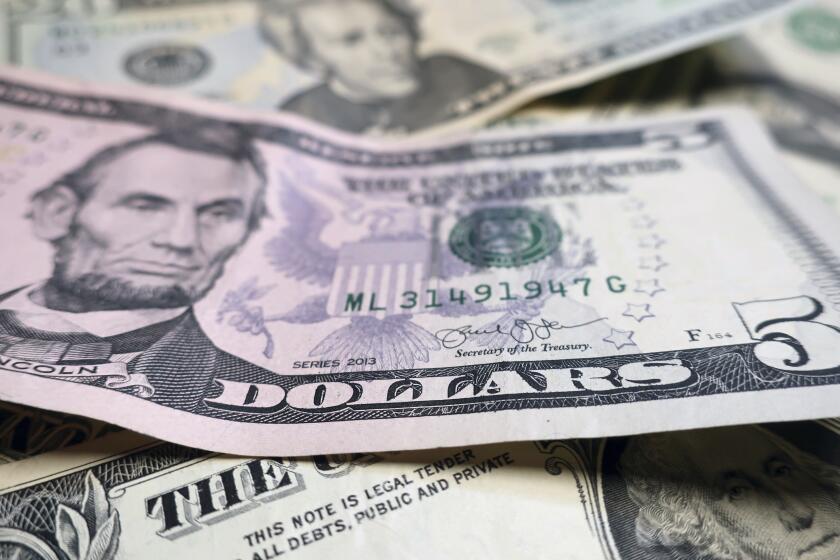YouTube offers new shopping option during Coachella livestream
- Share via
When hip-hop group Brockhampton takes the stage at Coachella this week, audiences streaming the festival at home on YouTube will be able to watch the concert and buy a commemorative T-shirt at the same time.
During the performance, viewers will be able to click on a link on their phones or scan the QR code on their television screens to purchase Brockhampton shirts through Coachella’s store — without leaving the livestreamed concert on YouTube.
It will be the first time that YouTube has sold exclusive merchandise during its Coachella livestream, part of an effort to enhance the viewing experience of people watching the festival at home.
In addition to shopping, YouTube viewers will be able to check out short-form videos made by creators including Larray and Kaiti Yoo at Coachella on their YouTube channels. On the livestream, fans can join a live chat during performances.
“We’re always trying to deepen the roots [with] fans and artists and one of the best ways that you could do it is through merchandise,” said Lyor Cohen, YouTube’s global head of music. “The whole idea of exclusive merch drops is just so fans and artists could have more intersections together.”
For years, the Google-owned social video giant has hosted concerts and other live events as a way to draw viewers and advertising dollars to its site. Now, the company is looking to expand its presence in online shopping to draw more people to its live events.
YouTube began testing live shopping experiences last year and launched the weeklong “YouTube Holiday Stream and Shop,” with creators marketing products from retailers including Walmart, Samsung and Verizon.
Coachella organizers have tapped EDM supergroup Swedish House Mafia and R&B star the Weeknd to co-headline the festival later this month.
Purchasing products via links on social media has become even more popular during the pandemic, when consumers shifted their purchases to buying online rather than in stores.
Retail sales made through social media sites in the U.S. are expected to grow 25% to $45.74 billion this year, according to research firm eMarketer. About half of U.S. social media users said they purchased something through a social media site in the last 12 months, according to an Insider Intelligence survey last year.
YouTube was the third most popular social media site for retail purchases, with 16% of those surveyed choosing the Google-owned video giant, according to Insider Intelligence.
Gen Z members — loosely defined as people born from 1997 to 2007 — are twice as likely to make a purchase based on what influencers say, according to Mike Chapman, a partner at management consulting firm Kearney. These consumers like to ask a lot of questions about their purchases and tend to be impulse buyers, Chapman added.
“When you think about traditional e-commerce, where you have a static product page, livestreaming allows for that interaction and that validation of a consumer’s questions before the purchase, which is something you often don’t get on traditional e-commerce sites or apps,” Chapman said.
Other social media companies including Facebook, Instagram and TikTok have tools that allow creators and businesses to feature links or images of products that viewers can click on to purchase during a livestream. There are also several start-ups that are in the livestreaming shopping space, including L.A.-based NTWRK, which raised $50 million in funding last year, and Toronto-based ShopThing that raised $10 million in a Series A round in March.
Amazon has also tried to connect the retail side of its business with original programming. “Making the Cut” is a fashion design competition series on Amazon Prime Video, with clothing featured on the show sold on Amazon’s website.
The idea behind selling exclusive merchandise on the Coachella livestream was to give viewers the opportunity to buy a concert T-shirt or other merchandise that commemorates the experience of watching the show live, said Bridget Dolan, managing director of YouTube Shopping Partnerships in an interview.
“When you have a livestream experience, that was probably the one element that was missing out, was the idea that you actually participated, you watched it live, you saw the artists unfold and come on stage, and you’re a part of that experience,” said Dolan.
She said the Brockhampton shirts sold during the Coachella livestream will be available exclusively to people watching the livestream. Performers such as Billie Eilish and Flume will also sell exclusive merchandise during YouTube’s livestream of Coachella.
YouTube has a deal with Coachella promoter Goldenvoice to exclusively stream the music festival, which it has done since 2011.
YouTube declined to comment on the terms of their agreement but it has clearly been beneficial to both companies. In 2019 — the last time Coachella was held, due to the COVID-19 pandemic — YouTube said it had 82.9 million live views during the first weekend of the musical festival. Since then, more consumers have grown accustomed to streaming entertainment at home.
Livestreaming from a showroom in Los Angeles’ fashion district, Simi Wu enticed an audience half a world away in China with an offer: The bubbly host said she’d give a discount to anyone who could correctly name the brand of the vintage belt she was wearing.
“It’s been incredible to see the performances from our festival be shared with fans around the world,” said Paul Tollett, president and CEO of Coachella.
Because of high demand, securing tickets to attend Coachella, held over two weekends in Indio, can be difficult. Making aspects of the festival available on the livestream allows more people around the world to watch it from home, which in turn, has increased awareness of the festival, Cohen said.
“Livestreaming has infinite possibilities,” Cohen said. “It actually helped create this global brand of Coachella.”
YouTube is leaning into shopping and other areas as it scales back its YouTube Originals slate of original TV shows and films.
The San Bruno-based company mainly makes money through advertising — it generated $8.6 billion in ad revenue in the fourth quarter, up 25% — and analysts say that livestreamed shopping could be a future area of growth.
YouTube does not take any cut of revenue sold during the live shopping experiences.
“We’re testing and experimenting so much that right now we really just want to make sure that we’re getting it right, before we figure out the exact business model,” Dolan said.
More to Read
Inside the business of entertainment
The Wide Shot brings you news, analysis and insights on everything from streaming wars to production — and what it all means for the future.
You may occasionally receive promotional content from the Los Angeles Times.













